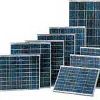
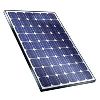
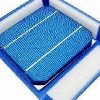

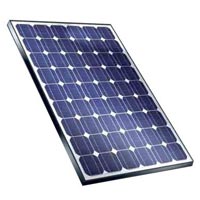
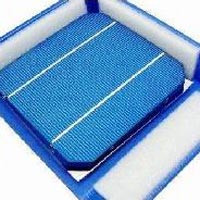
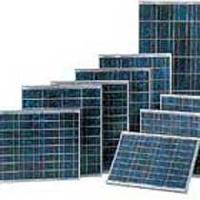
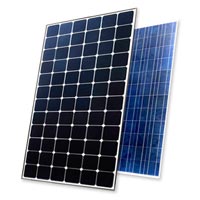

solar light panel
Get Price Quote
Following the strict packaging guidelines, we make sure that the range of products we offer are packed sternly to evade lossdamage. By this, we ensure that the products are in safe condition during handling, warehousing and transportation. We ensure on time distribution of wholesale as well as retail consignments owing to an extensive vendor, distributor and logistic facility base.

Disposable Leaf Plate
Get Price Quote
Foley Balloon catheter, Urine CollectionDrainage Bag, Urethral Catheter, External Male Condom catheter.
Best Deals from Solar Thin Film
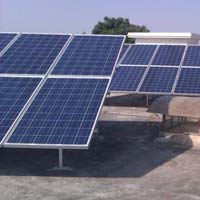
Solar Cells, Solar Modules
Get Price Quote
We are offering us a high quality range of environment friendly solar cells & modules. These modules offer a stable performance for multipurpose outdoor applications. Manufactured using high quality raw material, these are highly resistant to the severest climatic conditions. We offer an unmatched 25 years warranty on these products for power output. These technologically advanced products feature bypass diodes, which reduce the power loss caused by shade. The modules use high efficiency 125 mm square mono-crystalline silicon solar cells with over 14% module conversion efficiency. material monocrystalline siliconpolycrystalline siliconamorphous silicon photovoltaics: solar electricity and solar cells in theory and practice the word photovoltaic is a combination of the greek word for light and the name of the physicist allesandro volta. It identifies the direct conversion of sunlight into energy by means of solar cells. The conversion process is based on the photoelectric effect discovered by alexander bequerel in 1839. The photoelectric effect describes the release of positive and negative charge carriers in a solid state when light strikes its surface. how does a solar cell work? solar cells are composed of various semiconducting materials. Semiconductors are materials, which become electrically conductive when supplied with light or heat, but which operate as insulators at low temperatures. over 95% of all the solar cells produced worldwide are composed of the semiconductor material silicon (si). As the second most abundant element in earth`s crust, silicon has the advantage, of being available in sufficient quantities, and additionally processing the material does not burden the environment. To produce a solar cell, the semiconductor is contaminated or "doped". "doping" is the intentional introduction of chemical elements, with which one can obtain a surplus of either positive charge carriers (p-conducting semiconductor layer) or negative charge carriers (n-conducting semiconductor layer) from the semiconductor material. If two differently contaminated semiconductor layers are combined, then a so-called p-n-junction results on the boundary of the layers. at this junction, an interior electric field is built up which leads to the separation of the charge carriers that are released by light. Through metal contacts, an electric charge can be tapped. If the outer circuit is closed, meaning a consumer is connected, then direct current flows. silicon cells are approximately 10 cm by 10 cm large (recently also 15 cm by 15 cm). A transparent anti-reflection film protects the cell and decreases reflective loss on the cell surface. the usable voltage from solar cells depends on the semiconductor material. In silicon it amounts to approximately 0.5 v. Terminal voltage is only weakly dependent on light radiation, while the current intensity increases with higher luminosity. A 100 cm² silicon cell, for example, reaches a maximum current intensity of approximately 2 a when radiated by 1000 wm². the output (product of electricity and voltage) of a solar cell is temperature dependent. Higher cell temperatures lead to lower output, and hence to lower efficiency. The level of efficiency indicates how much of the radiated quantity of light is converted into useable electrical energy. different cell types one can distinguish three cell types according to the type of crystal: monocrystalline, polycrystalline and amorphous. To produce a monocrystalline silicon cell, absolutely pure semiconducting material is necessary. Monocrystalline rods are extracted from melted silicon and then sawed into thin plates. This production process guarantees a relatively high level of efficiency. the production of polycrystalline cells is more cost-efficient. In this process, liquid silicon is poured into blocks that are subsequently sawed into plates. During solidification of the material, crystal structures of varying sizes are formed, at whose borders defects emerge. As a result of this crystal defect, the solar cell is less efficient. if a silicon film is deposited on glass or another substrate material, this is a so-called amorphous or thin layer cell. The layer thickness amounts to less than 1µm (thickness of a human hair: 50-100 µm), so the production costs are lower due to the low material costs. However, the efficiency of amorphous cells is much lower than that of the other two cell types. Because of this, they are primarily used in low power equipment (watches, pocket calculators) or as facade elements. level of efficiency in % lab approx. 24approx. 18approx. 13 level of efficiency in % production 14 to1713 to155 to7 from the cell to the module in order to make the appropriate voltages and outputs available for different applications, single solar cells are interconnected to form larger units. Cells connected in series have a higher voltage, while those connected in parallel produce more electric current. The interconnected solar cells are usually embedded in transparent ethyl-vinyl-acetate, fitted with an aluminum or stainless steel frame and covered with transparent glass on the front side. the typical power ratings of such solar modules are between 10 wpeak and 100 wpeak. The characteristic data refer to the standard test conditions of 1000 wm² solar radiation at a cell temperature of 25° celsius. The manufacturer's standard warranty of ten or more years is quite long and shows the high quality standards and life expectancy of today's products. in addition to optimizing the production processes, work is also being done to increase the level of efficiency, in order to lower the costs of solar cells. However, different loss mechanisms are setting limits on these plans. Basically, the different semiconductor materials or combinations are suited only for specific spectral ranges. Therefore a specific portion of the radiant energy cannot be used, because the light quanta (photons) do not have enough energy to "activate" the charge carriers. On the other hand, a certain amount of surplus photon energy is transformed into heat rather than into electrical energy. In addition to that, there are optical losses, such as the shadowing of the cell surface through contact with the glass surface or reflection of incoming rays on the cell surface. Other loss mechanisms are electrical resistance losses in the semiconductor and the connecting cable. The disrupting influence of material contamination, surface effects and crystal defects, however, are also significant. single loss mechanisms (photons with too little energy are not absorbed, surplus photon energy is transformed into heat) cannot be further improved because of inherent physical limits imposed by the materials themselves. This leads to a theoretical maximum level of efficiency, i.e. Approximately 28% for crystal silicon.

Disposable Leaf Plate
Get Price Quote
Disposable Leaf Plate

Solar Lantern Module
Get Price Quote
Solar Lantern Module, GSM GPRS Patch Antenna, MINI2440 S3C2440 ARM9 Board

Synchronizing Panel
Get Price Quote
MCC Panel Board, pcc panel boards, MCB Distribution Boards, Bus Duct

Solar Panel
Get Price Quote
emergency strip light, solar electrical products

Disposable Leaf Plate
Get Price Quote
Disposable Leaf Plate, aluminum items, Textile Products, Surgical Products

Disposable Leaf Plate
Get Price Quote
Disposable Leaf Plate, Silver Beads, Plastic Beads, round plastic beads

Solar Power Panel
Get Price Quote
Financial Advisory, commodity broker

GreenBox™ GB200WS
Get Price Quote
GreenBox™ which is a unique all-in-one product from “Omega Natural Polarity Pvt Ltd”, this consist of all parts required to go solar electrification in simple easy steps. The system comprises of Solar PV Module (Solar Cells), charge controller, battery and LED lights (Optional). The solar module is installed in the open on roof/terrace exposed to sunlight and the charge controller and battery are kept inside a protected place in the house. The solar module requires periodic dusting for effective performance.

Disposable Leaf Plate
Get Price Quote
Disposable Leaf Plate, Surgical Cap, surgery instruments

Disposable Leaf Plate
Get Price Quote
Disposable Leaf Plate, Laboratory Coat, Disposable Waste Collection Bags

Solar Panel
Get Price Quote
Solar Street Light System, vertical axis wind mill

SOLAR PANELS
Get Price Quote
solar pumps

Synchronizing Panel
Get Price Quote
Sheet Shearing Machine, pcb switches, Led Panels, LT Panel Board